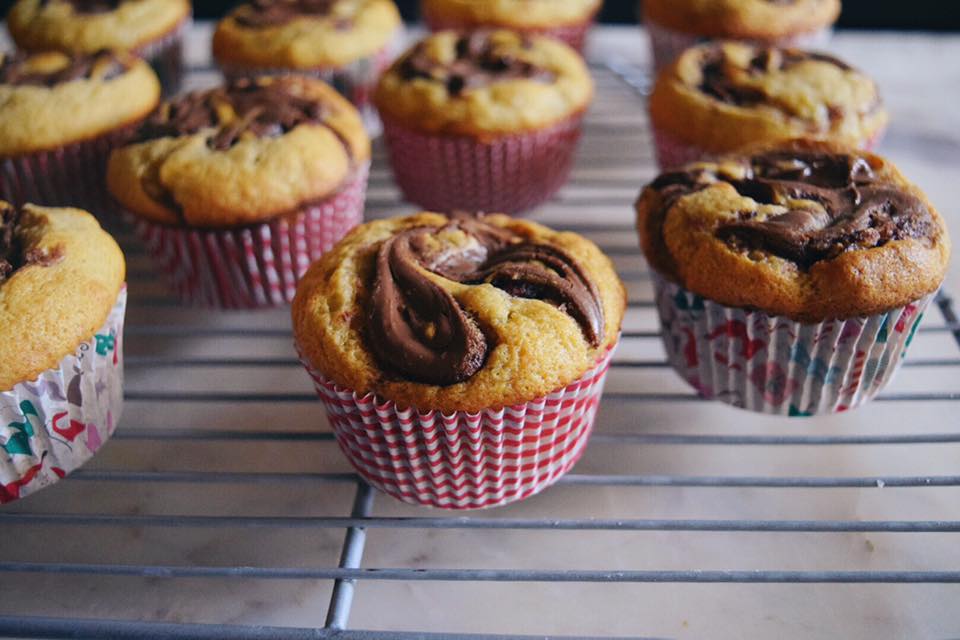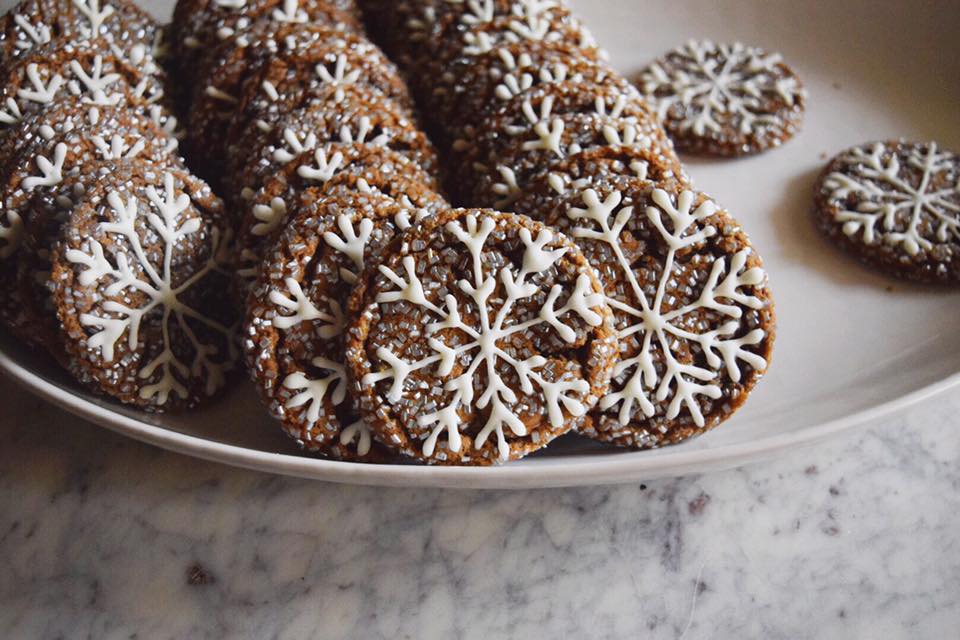Hi Food Truck Friends! Today we wanted to chat about one of our favorite subjects – food photography. Everyone loves to share drool-inducing photos, and these images are one of your best assets when it comes to successfully marketing what your truck has to offer. The photos you take can be used on your website, on social media, and on your menus so they're well worth a little time and effort. The greatest news regarding these photos is that you don't need fancy equipment to get the job done. The following tips are designed for our do-it-yourself partners, and can be applied whether you're using a professional camera or just your phone.
1) Choosing the right subject
Not all food photographs equally. To start, choose menu items that have more dimension. Dishes that are liquid or gooey such as soup or lasagna are very challenging to capture in an appealing way, which means your best-selling menu item may not be the item you want to start with. Evaluate your menu for dishes that are pretty on a plate, and work upward from there. The pizza below with added basil is a great example of how to make a gooey, cheesy dish "pop" on camera.

2) Setting aside time to photograph
Some truckers can take a quick snap as they dish up food on the truck in the middle of service and it looks great (!), but carefully plating a dish and setting up in good lighting is better accomplished when you have some extra time. We recommend setting aside a couple hours to make and photograph different dishes in a clean, spacious, well-lit area, and keeping these images on file to share when you're about to head to a shift, or for use in advertising later.
And don't forget to take photos of your truck itself so your prospective customers can connect the food they've been seeing with you at an event!
3) Thinking through your assembly
The way you assemble a dish to be photographed will likely be a little different than a dish you are putting together to serve. For example, when serving beef stew with mashed potatoes you might just add the potatoes to a bowl, then ladle the stew on top. However, for greater appeal in photographs, it makes more sense to put the potatoes in a bowl, use a slotted spoon to drain the stew adding only the meat and vegetables stacked carefully on top of the potatoes, and then sparingly drizzle the liquid portion of the stew over top. You can also deliberately place any herbs or a sprinkle of pepper on top with greater care than you would normally. The difference in the way you assemble in this example will allow you to control the ratios of meat/veggies to liquid, and ensure the parts of the meal you want to stand out in the photograph, will. Yes, of course it's delicious either way – but we want to capture the most scrumptious looking version of your menu items.
You can also photograph dishes that are a little messy or crowded in stages – taking an "in progress" shot to show how you assemble a rice bowl, for example, and what is in it or even shots of all the ingredients laid out but not yet assembled. This helps customers to get an idea of what all is in that bowl in a more comprehensive way than a simple completed top-down view. For these types of photos you can add a caption explaining the choices a customer can make on protein and veggies, or even saying "our bowl just before we add our special sauce!" or something similar to indicate the meal isn't quite completed.
Also be cognizant of placing items such as butter (butter-based sauces) and cheese. If you add a pat of butter to a hot potato, or sprinkle cheese over steaming chili, what happens? It melts. If you want a crisper photo with a little more dimension, be set up and ready to snap as soon as you place that butter or cheese on top before it disintegrates into the dish too much (unless your intention is to show the butter happily melting!) To make this easier you can also let the item cool significantly before topping with butter or cheese, as no one will be able to tell if your dish cold in the photo. Also, be somewhat quick with items such as avocados, apples and bananas, which turn some unappetizing colors if left out in open air too long.
4) Lighting, Lighting, Lighting!
You know how they say you can't out-train a bad diet? It's equally difficult to out-edit a poorly lit photo. Proper lighting is essential for great food photos, ideally indoors next to a big window with natural light, that is oriented on a side of the dish or outdoors not in direct sunlight (cloudy or partially cloudy days are wonderful for this!) Direct sunlight is usually harsh, and can cast shadows if not photographed from a flattering angle, whereas fluorescent lighting can result in haze and distorted colors. Also be careful of shooting indoors with other light sources in a room (ex. you may be next to a window with lots of natural light, but also have artificial overhead lighting turned on. If so, try a couple shots with the lights on, and then try a few with it off to see which looks better.)
Here are a couple examples as to the differences lighting can make in your photos:
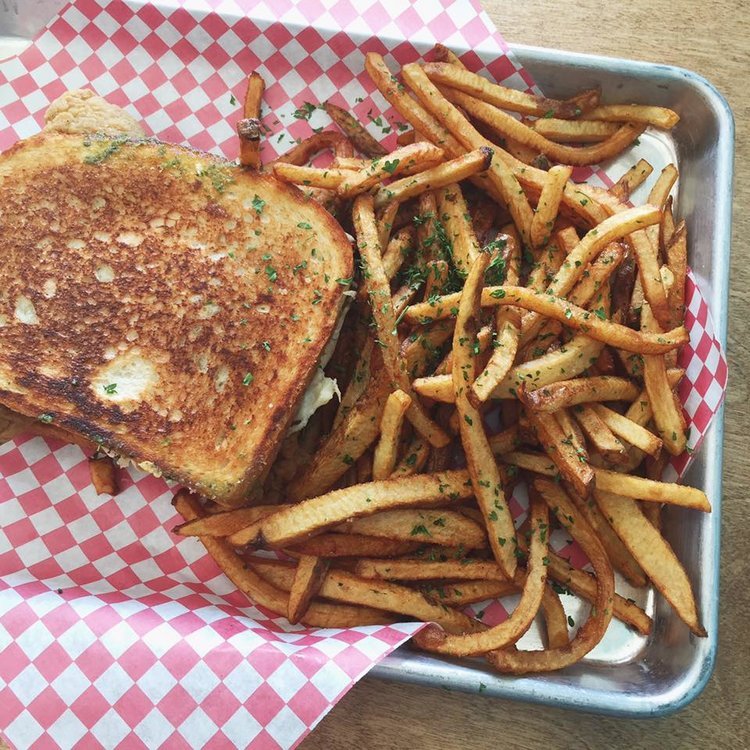
The sandwich and muffins above were taken indoors on a sunny day, next to a large window providing natural light with little to no interference from any artificial light inside.
The cookies and cupcakes above were both taken indoors on a cloudy day, with no artificial lighting. You'll notice the "temperature" of these photos is cooler than would be on a sunny day. The lighitng is a little moodier.
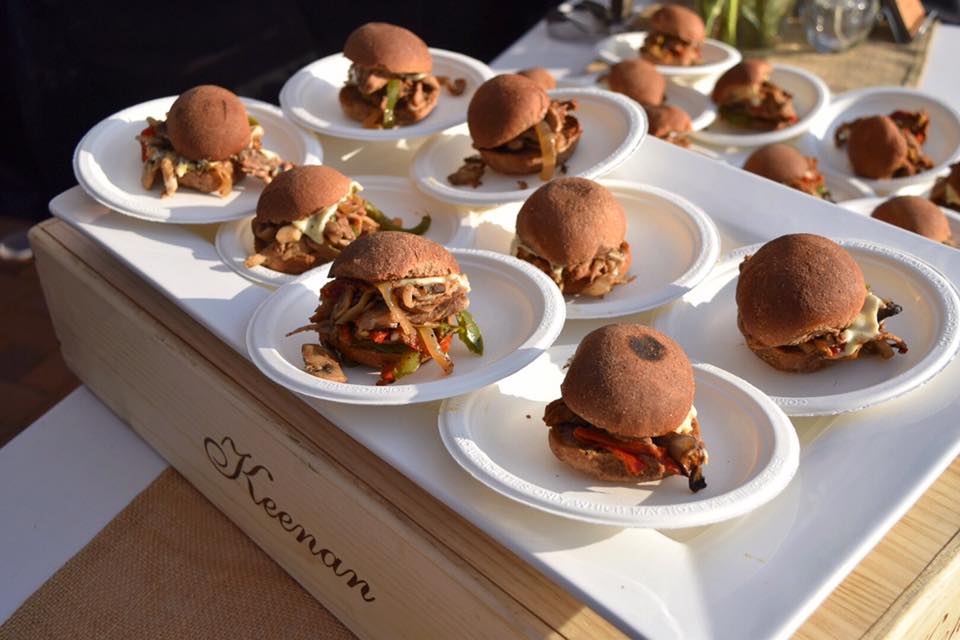
The shot above of the sliders was taken outdoors in direct sunlight on a very sunny day - when shooting in these conditions you will need to play with the angles to avoid casting any extra shadows on the food.

The chips and guac above were shot on a patio in daytime on a sunny day (indirect natural sunlight.)
The tacos above were shot at night, outside on a patio under artificial lighting.
All of the shots above work depending on the look you're going for (although I really don't recommend trying to shoot at night!) The first thing to do when you begin to shoot is to find a place where the lighting is good, and will give you the effect you want. Take a couple test shots with everyday items before you start preparing, and remember the lighting in naturally lit areas will change depending on time of day. I knew a blogger who would photograph everything (dinners included!) in her kitchen at 10:30am, when she felt the lighting was at it's best.
Now here are a couple examples of lighting to try and avoid:

The pictures of the pasta and coffee above were taken in restaurants in the daytime with some natural light, but primarily under artificial lighting. You can see there are some awkward shadows and reflections being cast, a warm orangey glow on the pasta, and actually the reflection of the overhead lighting on the pasta.
The photo above is staged fine, but was taken in a restaurant at night with low artificial lighting and edited to add some brightness. You can see the end result is really hazy.
The lighting on the fried chicken above is fine (natural light from a window, with some artificial lighting interferring) but the angle from which the photo is taken cast unwanted shadows.
5) Staging
As was briefly explained in the assembly tip – staging your plate for maximum appeal before you start snapping away is of the utmost importance. Plate carefully, and use a paper towel or Q-tips to clean up extra sauce, crumbs, and any wayward ingredients, spills or splashes. You want your completed plate/bowl/basket/container to look tight and neat.
Also don't forget what is around the plate. Ensure your dish is appearing on a clean surface, and that there is nothing too distracting in the background (or foreground) of the photo. The main focus should be your dish, and anything that is in the background or around your plate should lend some context that makes sense. For example, in the ice cream photo below, the cups were purchased while out shopping. The background is slightly blurred to show that the ice cream is the focus of this image, but the background adds context in a natural way that doesn't look overly staged. If someone's hand is holding your food, please make sure it's clean and that there is no chipped nail polish. Consider leaving your truck, a menu with your logo, customers, your chefs, etc. in the background of some pictures.
You can get creative with staging if you'd like, not just photographing cleaned, completed dishes but parts of menu items coming together, or in progress. And you don't have to be totally retentive, sometimes showing some of the ingredients used to make the dish, or a smear of sauce or spices on the side can lend a more organic, honest, I-just-made-this feel to your picture. These are all things to consider depending on the look you're going for.
Also be sure to try taking your photos from several different angles so you have a selection when you go in to edit. Typically it can take anywhere from 5 to 20 shots to get the perfect "one" to post. When shooting, try out slightly different angles, lighting, backgrounds, props, etc.
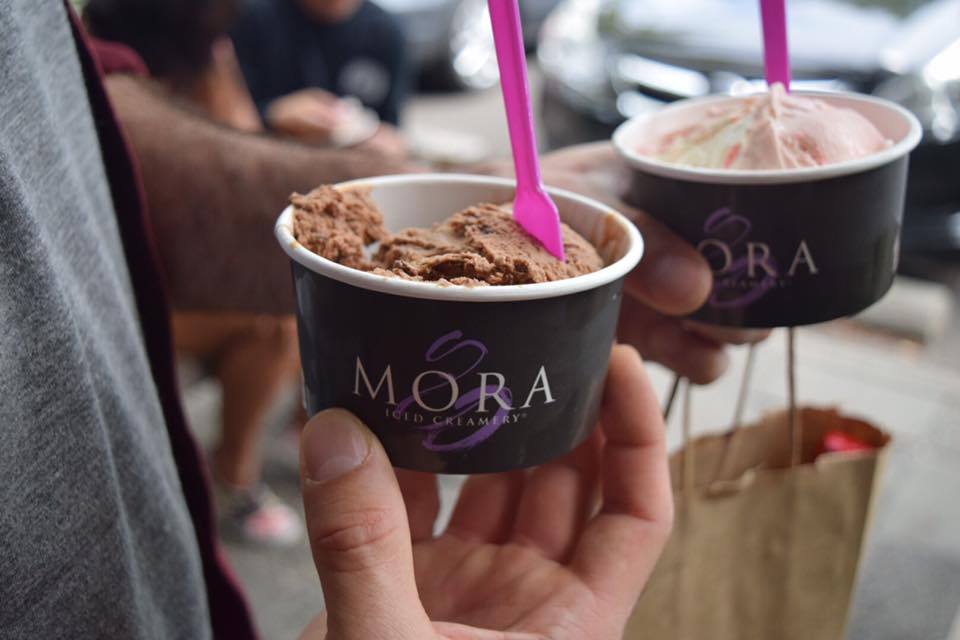

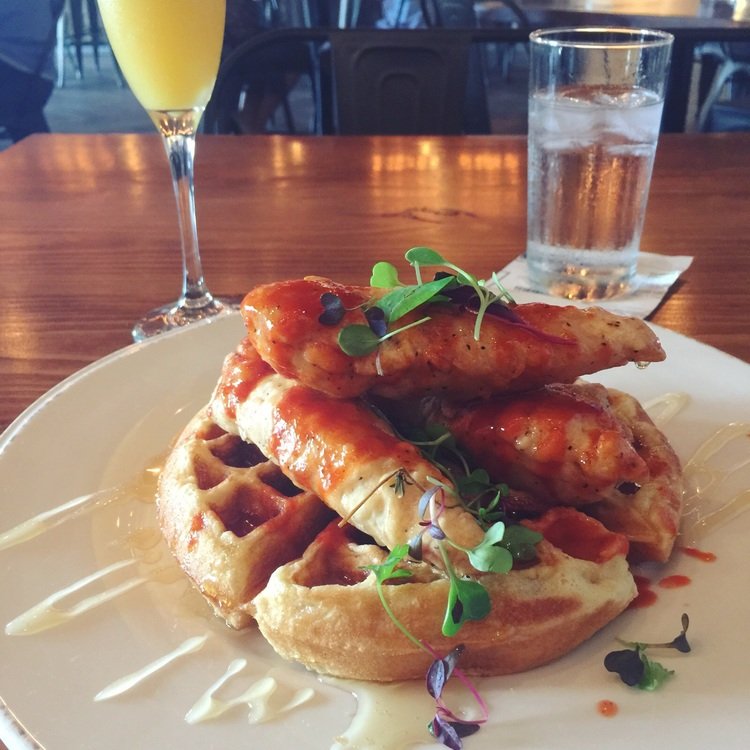
The chicken and waffles from two different angles - gives you a pretty different photo. Also note, these photos were taken at the same restaurant, in the same area of the restaurant as the "Bodega" photo above. The daytime lighting makes a huge difference!
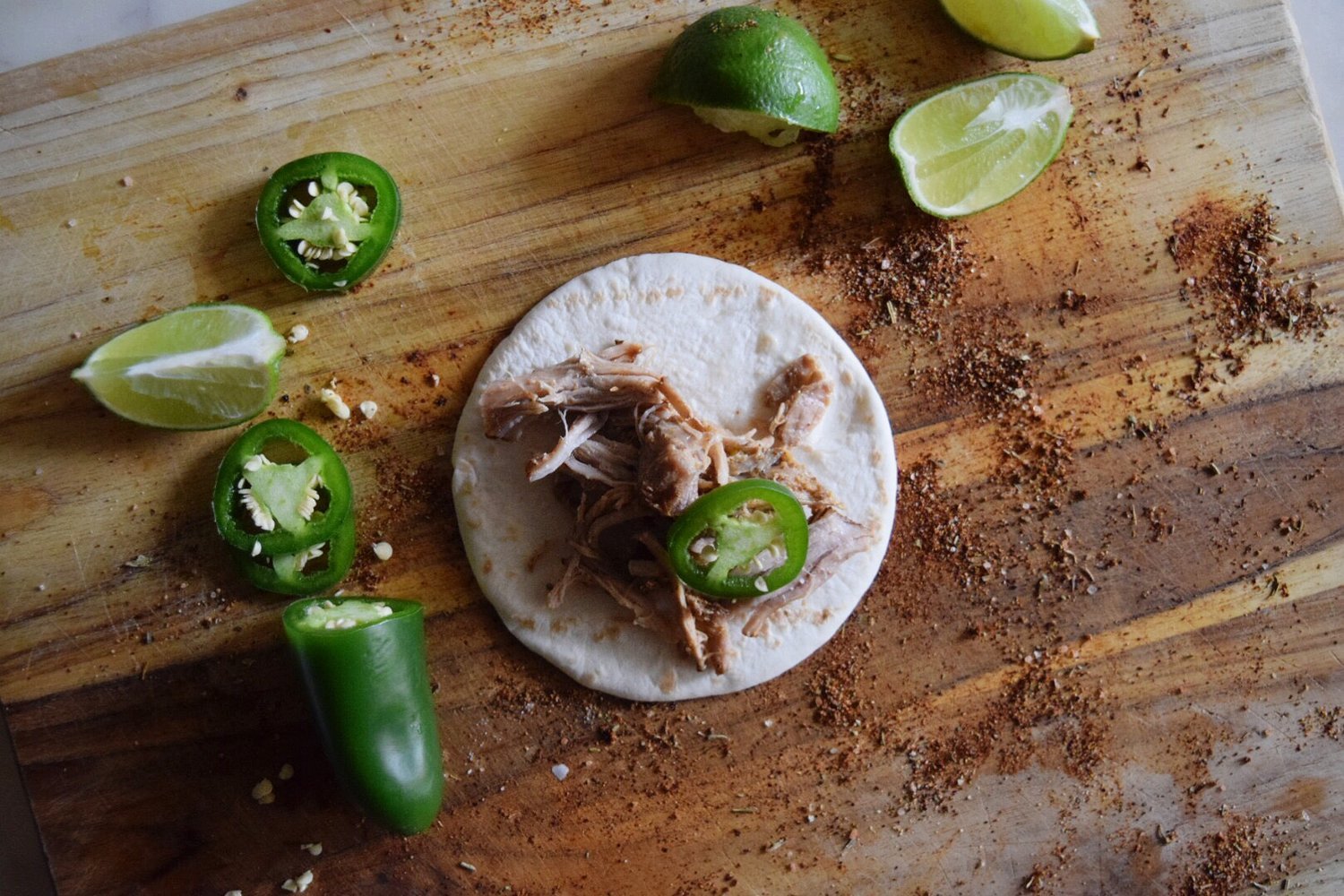
The taco above staged showing ingredients for assembly.

The brisket above shown more organically (sauce is naturally splashed) - about to be eaten.

Eating-in-progress showing what's inside the quesadilla.
6) Editing
To add that perfect finishing touch to your photos, consider doing some minor editing. This can fix slightly-too-dark or bright lighting and add a little dimension to really make your photo look perfect. For your phone, we like Afterlight as an editing app, and Instagram also offers some great basic options. If using Instagram, you can also simultaneously share your image on Facebook and other platforms.
For more natural looking edited photos, avoid filters and instead play manually with brightness and exposure, contrast, shadows/highlights and sharpness. It's not difficult, take some photos and just play with each one to discover what they do. Be careful and use a light hand with saturation, a great way to make your photos look over-processed or fake are colors that are just a little too bright. You'll get a feel for the style of images you like as you experiment.
7) Continuity
This is optional, and slightly more advanced for consideration once you get the hang of things – but you'll notice the best brands have some continuity to their images. Whether it's the same style of lighting, repeated colors, or a similar setup/background, the images posted are all different, yet look like they belong to the same series. This is something to work toward once you find the style that best fits your truck.
Thanks for reading, and we hope this crash course in basic food photography helps with your everyday marketing!

